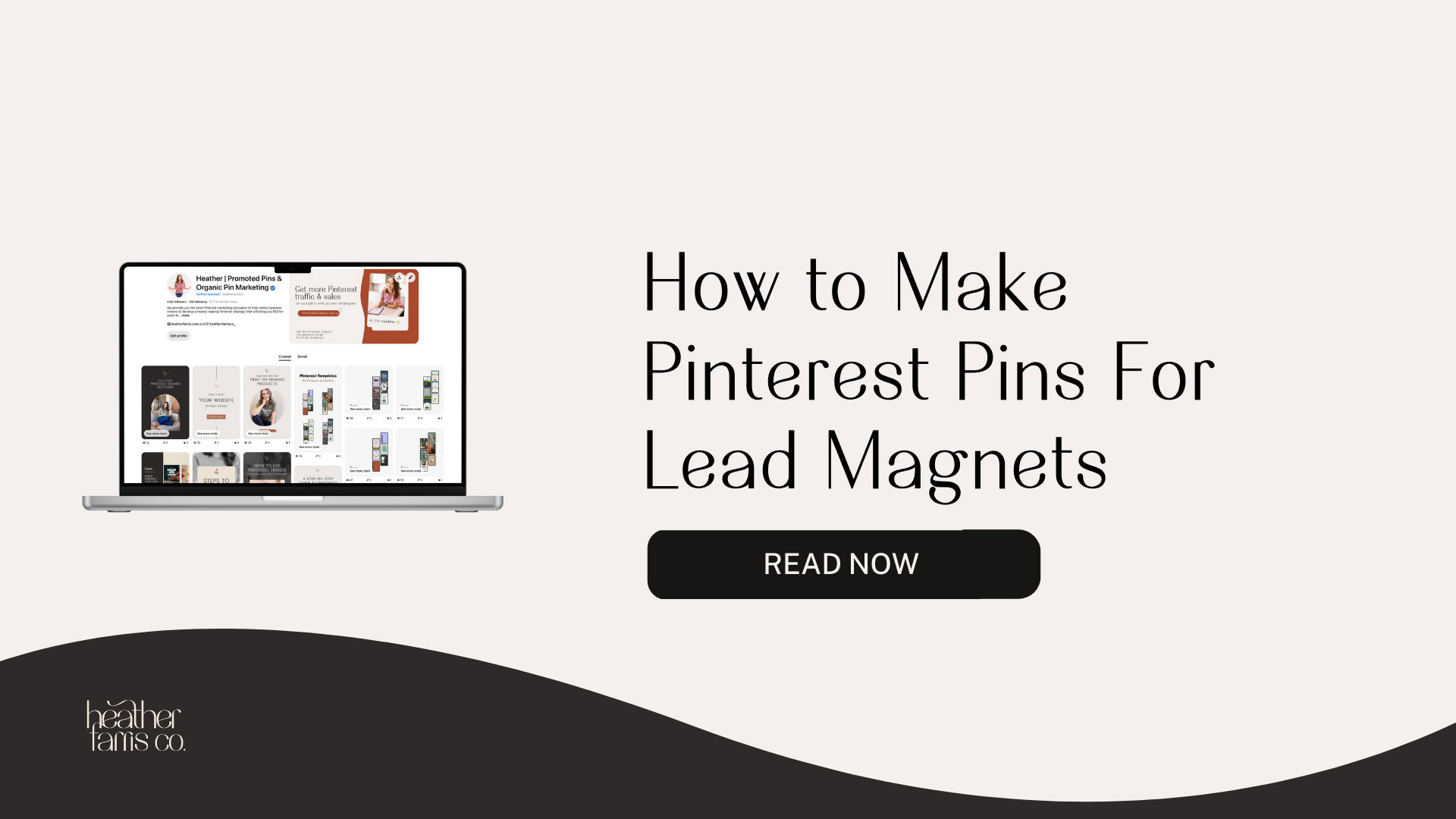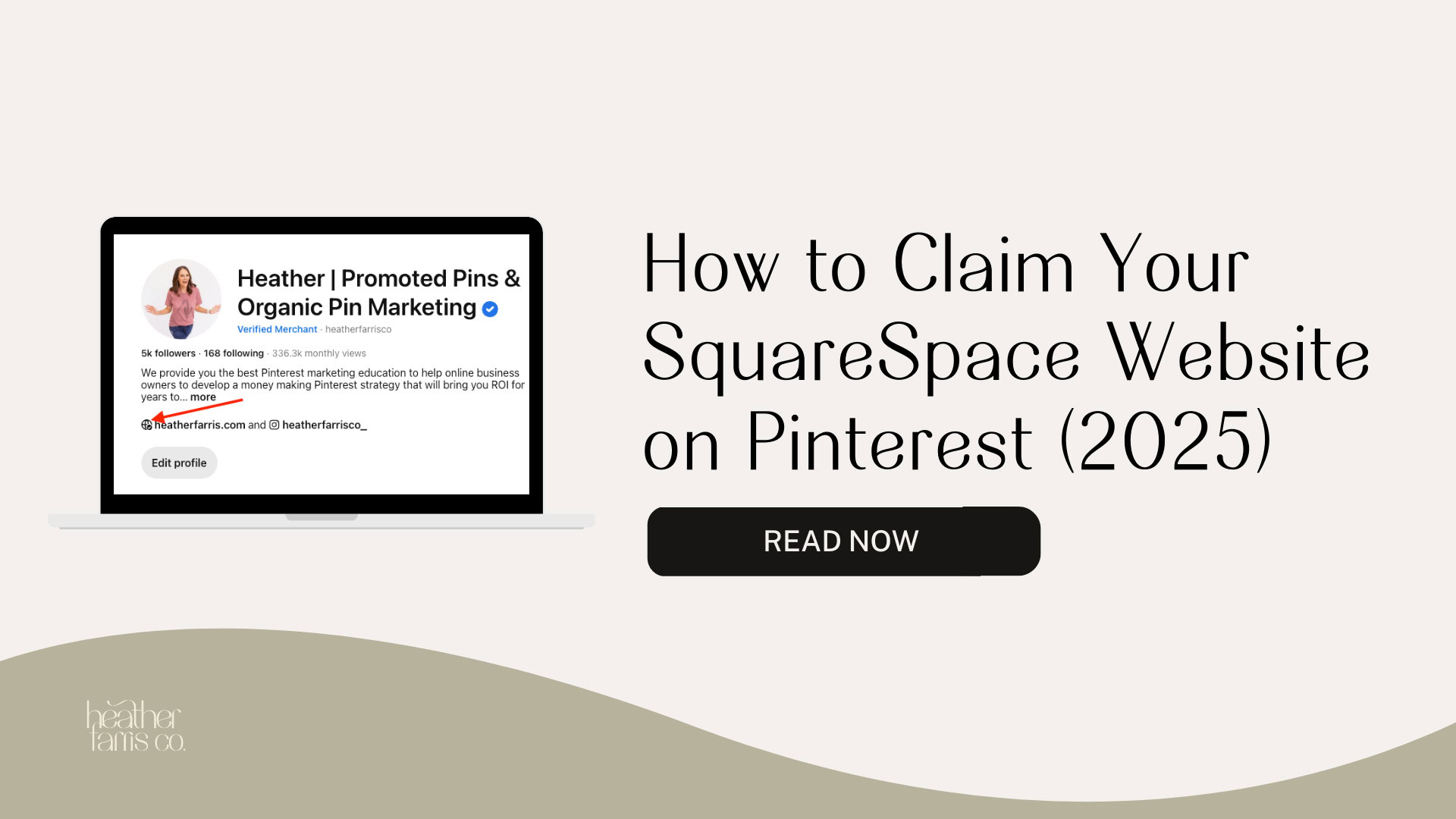Heather is a seasoned
Pinterest marketing expert & verified Pinterest educator using the platform since you could reach the bottom of the feed - 2010.
About Heather Farris >
The Ultimate Guide to Create and Sell Digital Products
August 11, 2024
Let us talk about the three steps I take every time I create and sell digital products in my small business. These are the same three steps you can take to see successful digital product launches that create a new stream of revenue.
It hinges on one main point: really understand your audience’s pain points and reasons for buying before you even begin to create the solution.
So what that means for you is you’re not going to go out and create a bunch of digital products to sell and list and hope and pray for sales. As real business owners, we’re not doing that.
How to create and sell digital products
Your next digital product shouldn’t be the easiest thing you do in your business. Remember, sales, while they should yield easy, don’t always come easy. A lot of people make this distinction; they get it backward.
So, I want to talk to you about the problems that your digital product should solve. It shouldn’t be all of these. It should be one or two of these.
As a digital product seller, your product should:
- Solve a problem
- Get your customers closer to their goals
- Save them money
- Save them time
- Help them to build relationships
One of these should be met with your digital product.
Steps I follow
You first want to identify a problem and the person who will buy that product based on that problem.
Second, you want to narrow in on why they would buy that product in the first place. Why are they buying this product? I’m going to walk you through the why’s based on pain points, but you can also do pleasure points.
The last thing is to identify the solution and delivery format, then follow through on your promise of what your digital product will do for them.
RELATED: My Simple Content Strategy For Digital Products
1. Identify the problem
First things first, identify the problem you’re going to solve with your digital products. When creating digital products, best practices look at what your audience is struggling with and where you ultimately want them to go.
For example, I have my Pinterest Free Strategy Guide because my audience’s problem is creating a Pinterest marketing strategy for digital products. Ultimately, I want them to end up in my membership program and I use this product as a lead into that membership.
Think about that customer journey through your product suite as you plan additional products to add to your digital product suite. If you don’t want minimal results, don’t skip this step.
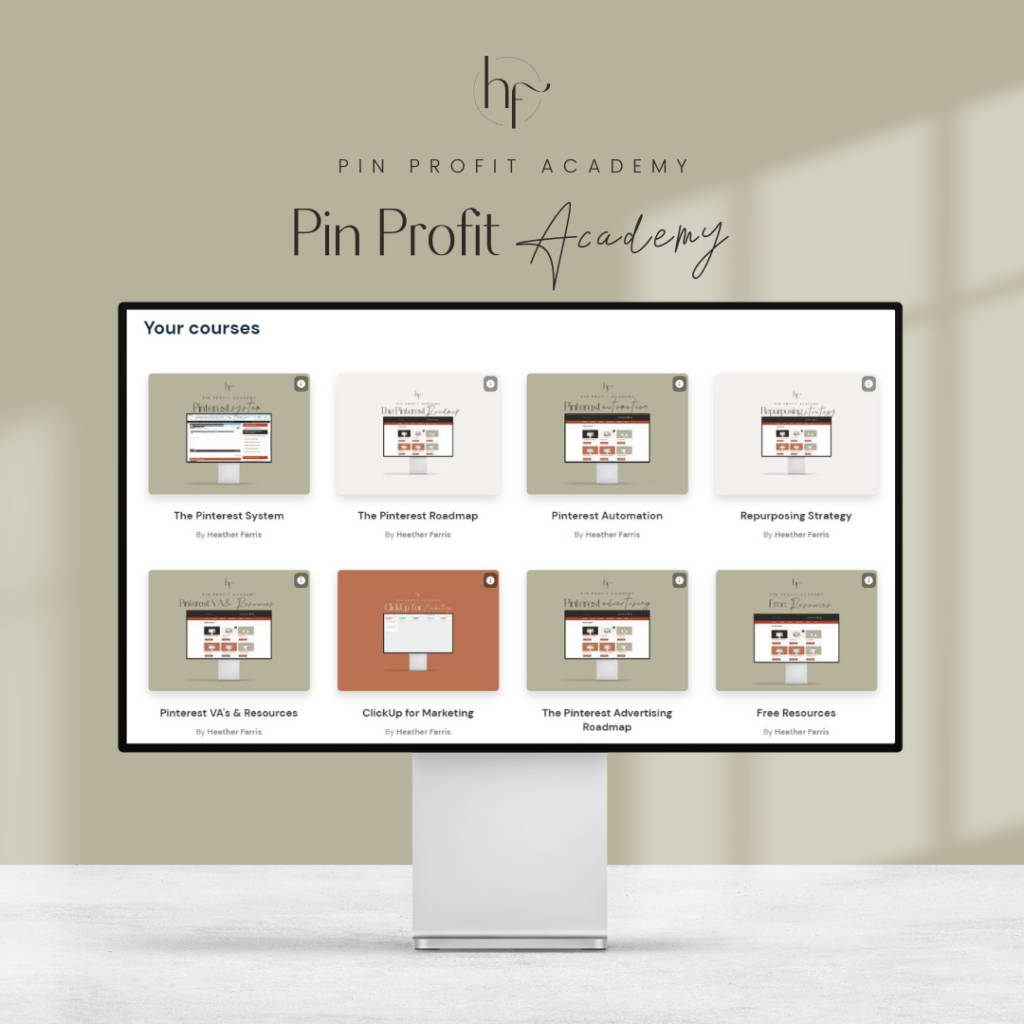
Pin Profit Academy
Marketing can be difficult and trying to figure it out on your own, especially with Pinterest, can be overwhelming.
I will show you how to double your traffic and sales without spending another minute on social media!
PPA is the only comprehensive membership program & community for creating, marketing & selling your products & services using Pinterest.
Digital products for college students example
Say you have a digital product store selling digital planners for college students. You could create a digital product that helps your audience manage the course load better, the time they need to invest in their course load, their study time, and also have a personal life and even a part-time job.
Now, that is a big ask. You can literally fill an entire digital product store with products that help that one sentence right there. So we really want to dig deeper into that and really narrow down on that one problem. What is a common problem they all have?
One common problem that an audience of college students might have is note-taking. They may have a big issue taking notes, keeping track of their notebooks, and filling them up. Never being able to find them, a little wire thing gets caught on every other book in their backpack. It’s just a pain in the rear, right?
RELATED: ThriveCart Review 2024: Sell Digital Products Like a Pro
College student pain points
A pain point of that common problem is they have too many notebooks. They can’t find where they wrote what sentence because they’re not searchable like a digital database would be. They’re always running out of space and need to buy more.
So, as we think about the common problem in the pain point, we can begin to develop a small digital product offering on that one problem. Remember, we’re not solving all the issues that they have; we’re solving one problem.
2. Defining why your audience should buy
I want you to define why your target market should buy that product. When people teach how to create digital products that sell, they make videos that say “Make 10K a month selling digital products”, or “These products make $200 a day!” OK, but why would your audience members buy those things?
For this particular example of the digital note-taking college student, they would buy this product to:
- Keep better track of their course notes.
- Have a more efficient study time because they’re more organized.
- Less money spent on journals or notebooks.
- They have less physical space taken up in their backpack. They’re not toting that around. They do not have to store it in their dorm room.
- They’re not accidentally leaving it at Mom and Dad’s house when they go back for a holiday. They’re not losing journals, forgetting what they had inside, and needing those notes because it’s synced online.
- The ability to back up their notes to a cloud is like the next level.
- They also are highly customizable. You can add graphs, drawings, and images and take notes on top of all of that to help with your studying.
RELATED: 12 Pinterest Audiences to Use to Make More Money on Your Ads
3. Create the solution with your product
Now that we’ve identified the problem and why someone would buy, we will create the solution with those things in mind because that will ultimately help us sell the product. Two solutions come to mind out of this example that I’ve given you.
a) Digital note-taking journal
It’s low cost, and it’s super easy to adopt. Most of us, if not all of us, have a tablet of some sort where we can download apps like GoodNotes or Notability.
And we can take notes in note-taking apps. You don’t just have to have an iPad to have an additional journal; you can have it on any tablet with note-taking apps.
Another benefit to this tiny product is that it can fit as a step in the funnel to where we ultimately want them to go.
b) Digital planner with a notebook
Now, this product will be a higher cost to the end user and will probably be a bigger ask for them to adopt because they probably already have a planner system they like. They may use Notion, they may use Google Calendar, they may have a physical planner, and they like that.
But maybe they only need a solution right now for digital journaling, just for note-taking. So keep that in mind. You don’t need to start with the biggest product first, and that’s where we’re going next.
REALTED: Use Pinterest For E-Commerce in 2024: Pinning Tactics for Product Sellers
Before you start creating a digital product
I want you to start by creating a minimum-viable product first. I talk about this often on my YouTube channel about creating a minimum viable Pinterest strategy. It’s the same thing here.
What is the absolute smallest version of this product that you can sell? While some content creators jump straight to online courses, you could create a live workshop, like what I did with my keyword workshop, and then you could sell that workshop after you put it on the first time. You could sell the replay before having to design a full course from scratch.
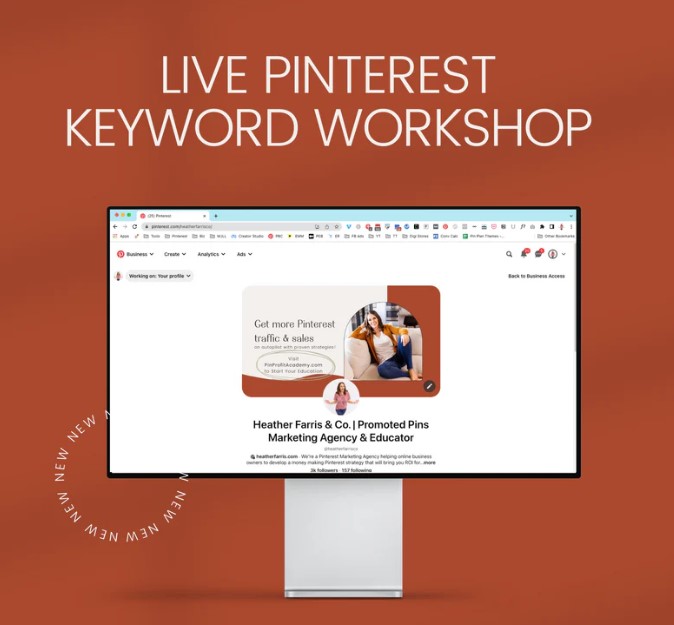
The Keyword Workshop for Pinterest
One of the best ways to increase sales & website traffic is to share it on platforms that are highly searchable where our audiences at hanging out.
In this interactive workshop, I’m going to dig into the exact framework I use to discover and connect with my ideal audience on Pinterest.
Instead of doing a digital planner, you can start with small digital journal pages and planner pages. Then, based on the audience’s reaction and feedback, you can figure out where to go from there.
Always fall back on why someone would buy this product. We don’t want to overwhelm our customers with all the bells, whistles, and reasons. Because it’s going to be harder for someone to change their habits and adopt something so big and so new,
So, let’s take it back to basics and figure out how it will help them.
Create products that compliment your lead magnets
Another pro tip is to create and sell digital products that pair well with your lead magnet. Almost all of my lead magnets pair well with one or two of my digital products. I placed those digital products on the thank you page for a lead magnet and it helps them take the next step.
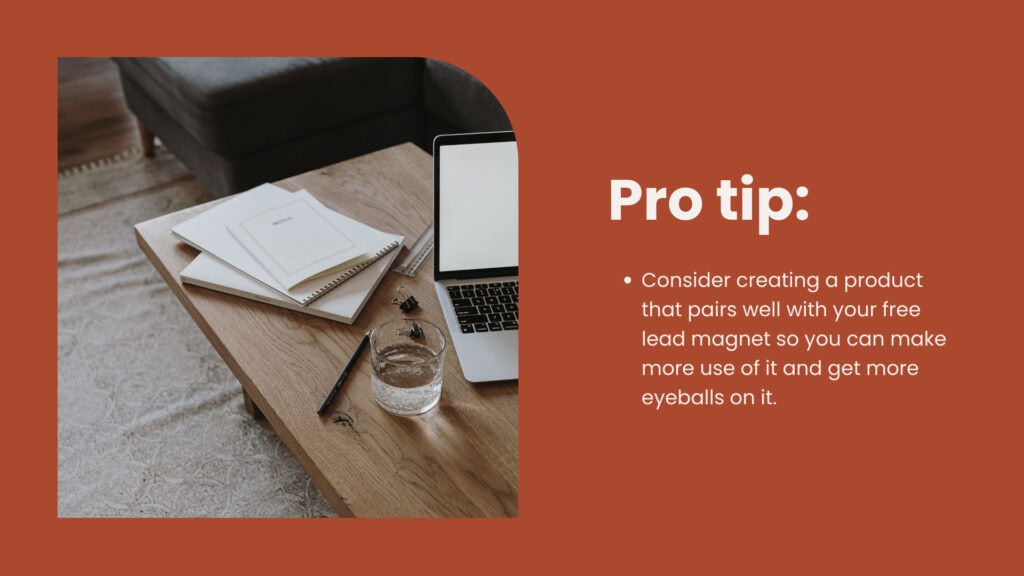
Not only are you going to get more eyeballs on your digital products right out of the gate, you’re also helping to secure more paid buyers into your email list. Then they’re into your ecosystem and would then be willing to go on and buy something from you again later.
RELATED: How to Create a High-Converting Lead Magnet in 4 Easy Steps
Draft your product
All right, so let’s talk about drafting your product. I want you to draft your product, send it out to people, and get some feedback. Whether you sell it at a really low price or give it to a select group of people for free, I want you to get feedback on it, and it needs to be constructive.
The feedback needs to contain:
- what they wish your product did more of
- what features they wish it had that it doesn’t
- what they didn’t like about it and how they’d change it
- what they did like for you to absolutely keep in it
When you get constructive feedback from people who are likely to buy your product, you can see through their eyes how they would approach or experience this product in the real marketplace.
You can also use the language they use from their feedback to use with new customers later on your sales pages. This will ultimately help you make your final product so good that it’s an absolute no-brainer to buy.
RELATED: Shopify Email Marketing for Digital Product Sellers
Prepping to sell your product
There are so many places that you can sell your digital products online in different ways. We won’t get into the nitty-gritty implementation parts of selling digital products. I will tell you that I have used ShopifyLite and SendOwl.
I have a few e-commerce stores, a Shopify store, an Etsy Store, and ThriveCart, but I’ve also been in business for seven years. So, I would start small with one place that’s really affordable for you to sell. Places like ThriveCart and SamCart will be of the more expensive ways to get selling your digital products. Some services even have monthly fees.
For Etsy, you have to pay $0.10 per listing, so you still have to pay to sell something. But there are affordable ways to get started and sell, and SendOwl is definitely one of them. And I think even link in bio tools like StanStore are very appealing.
You can also sell through Convertkit (an email service provider) now on their free plan; you just don’t have automation, which is really unfortunate. For there, I would start with their pro plan and get started with the ability to sell, and you can send emails, and it can be housed all in one place.
RELATED: Etsy Shop Marketing on Pinterest: Complete Promotion Strategy
Creating the product delivery process
Now, I want you to be simple and not go overboard with delivering your product because that will create more work for you. Your time is money; remember that. It will also be a lot to upkeep and potentially a lot in subscriptions.
I want you to deliver your digital product in PDFs, through Google Drive, and then the last option is course platforms.
Now, in situations like ThriveCart, you can already have a course platform built in from the get-go, and you can get started with ThriveCart for $495 for a lifetime. With that, you have a cart tool with sales pages, checkout pages, and a full course hosting software that integrates nicely with all major email service providers.
All the digital products I sell inside my Shopify and Etsy stores are all PDF Google documents I created and linked. Or they are Canva documents that I created and linked, and they’re just PDFs.
They click the buttons, they click the links in those PDFs, and it takes them to Canva to swipe the templates or ClickUp to copy the templates. The videos are embedded in links in those as well.
RELATED: How to Manage Your Pinterest Strategy in ClickUp
Final thoughts on how to create and sell digital products
Now that you know how to create and sell your digital products and what steps you should take to find out what will work for your audience, I’d like to invite you to watch this lead magnet YouTube video.
You can connect your lead magnet and your digital products to generate even more sales. So head on over here and watch that video, and I’ll see you there.
Pin it for later
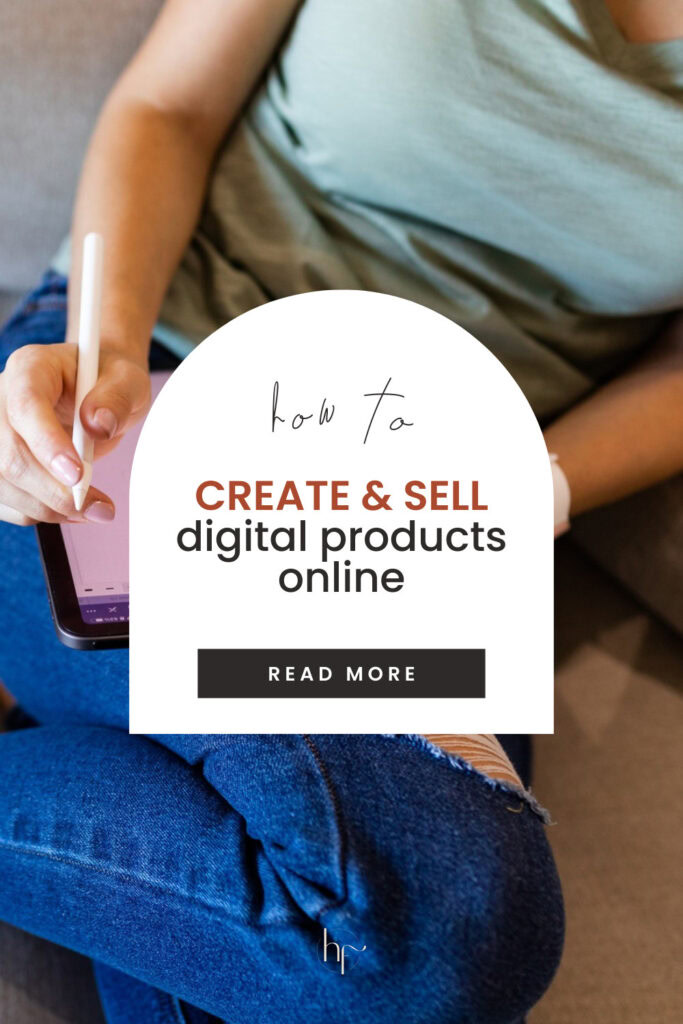
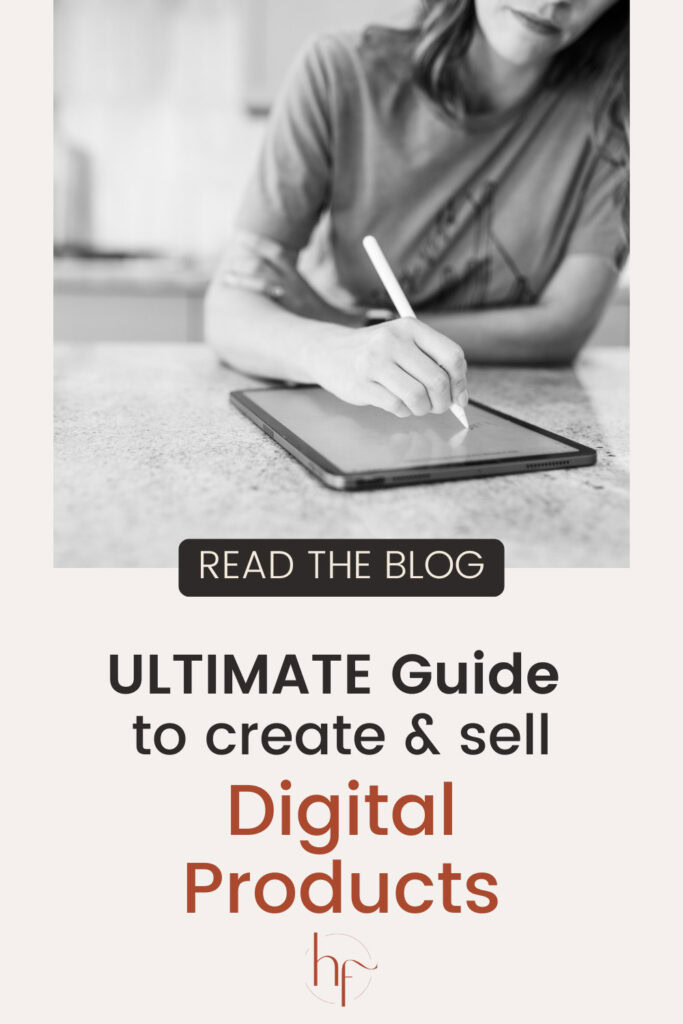
Heather went to school for accounting and worked for years in banking and finance. After finding all of that entirely too boring she started her first blog in her basement in August of 2016. She has started 3 blogs in the marketing, motherhood and travel niches and used Pinterest to grow them all. She quickly became the go-to Pinterest strategist in her peer circles and has been implementing strategies, driving traffic and sales through organic and paid tactics for her clients. On this blog and her YouTube channel she educates the public about clear and transparent marketing strategies to help them to grow on Pinterest and in other places online.


